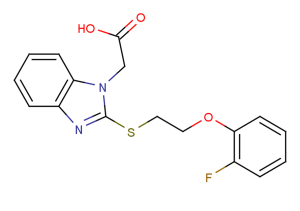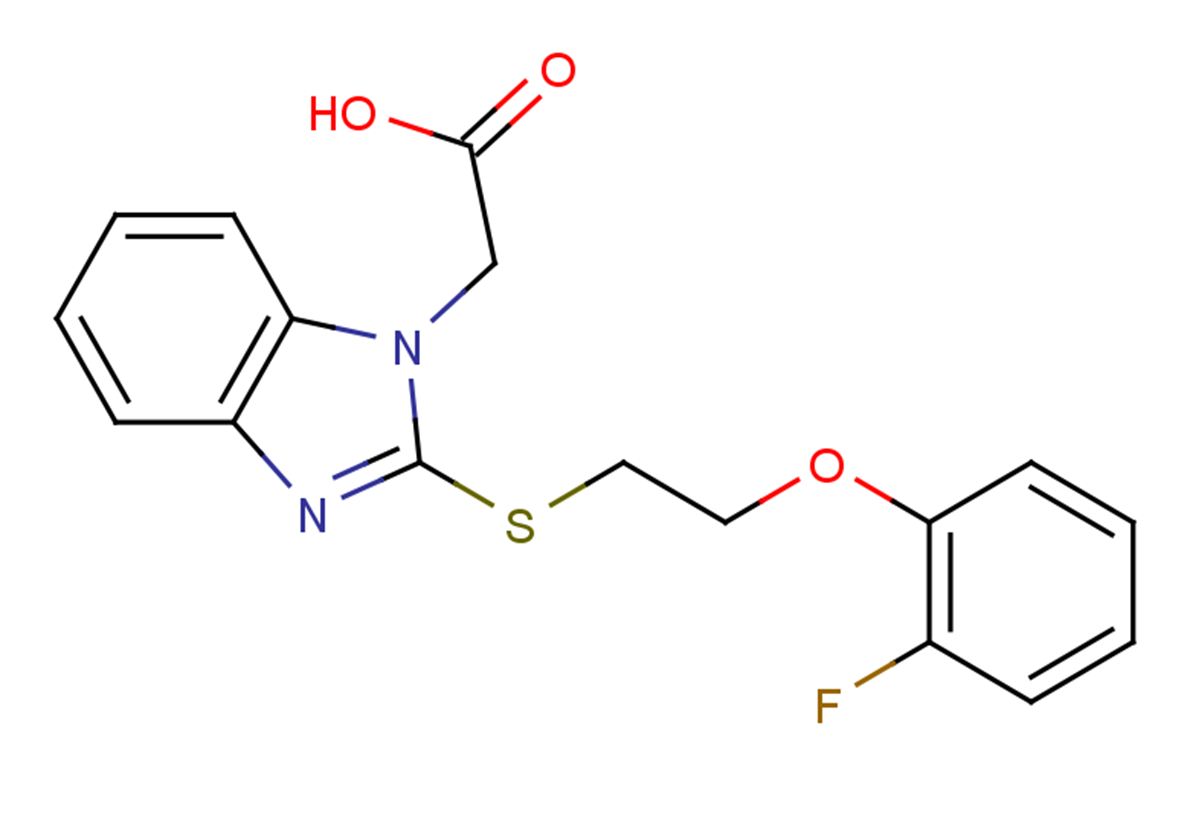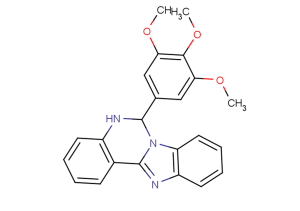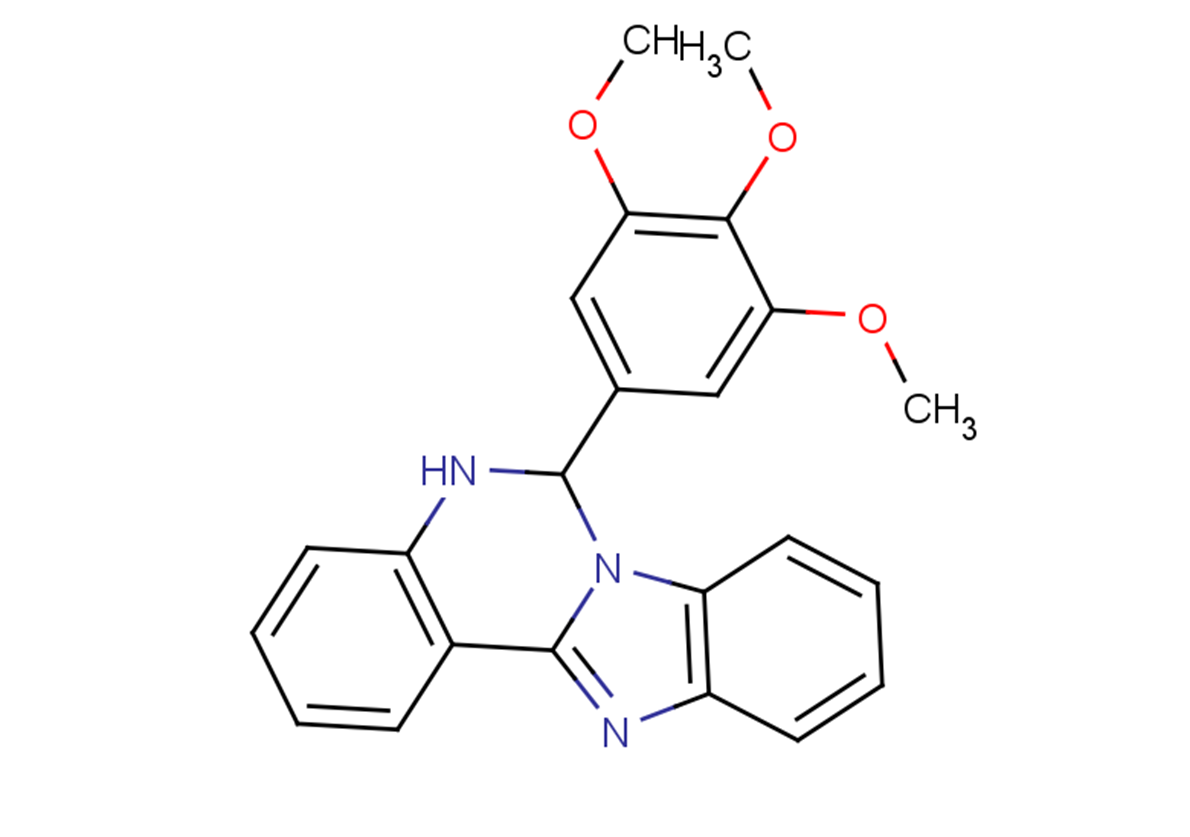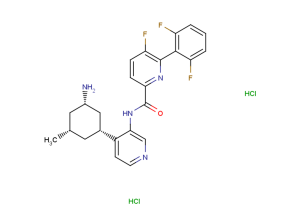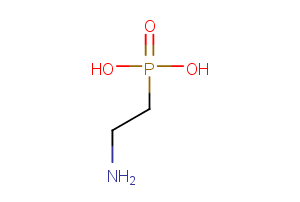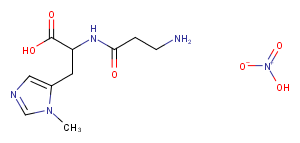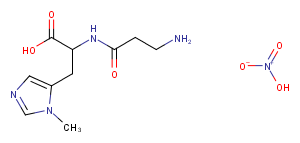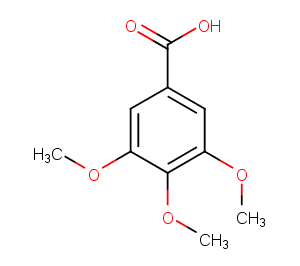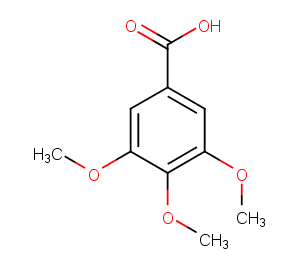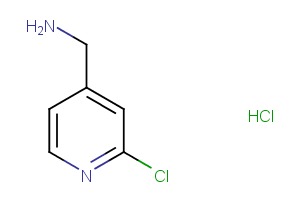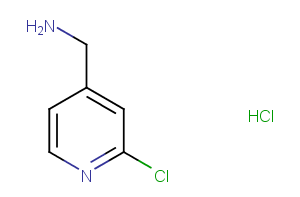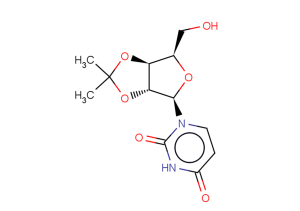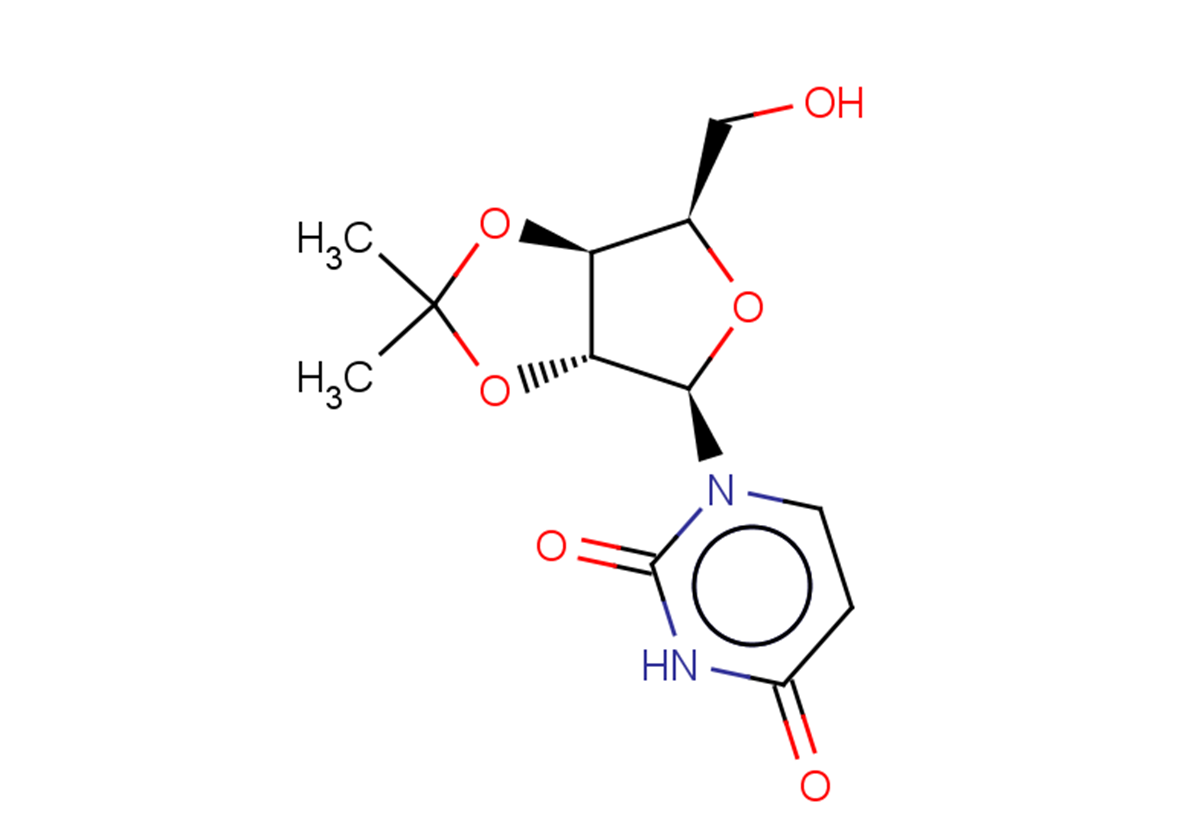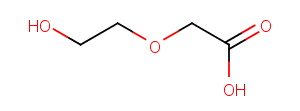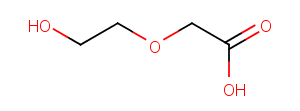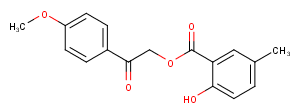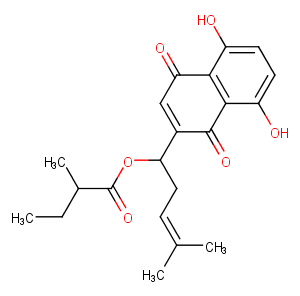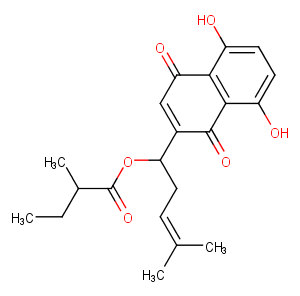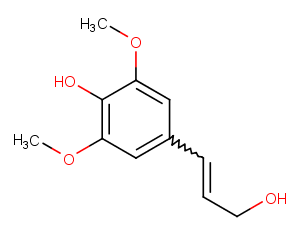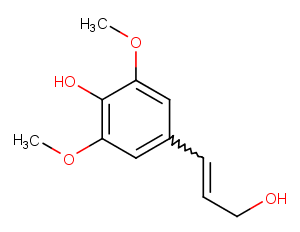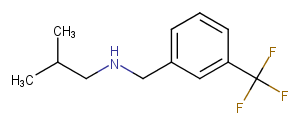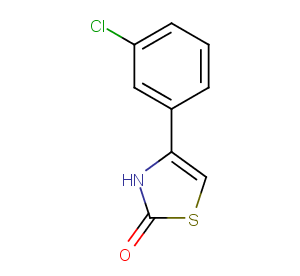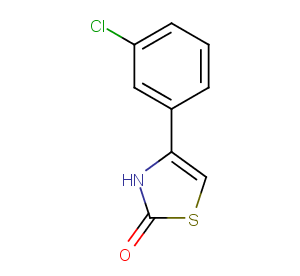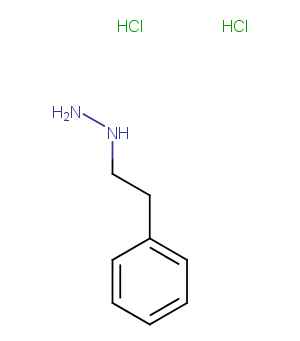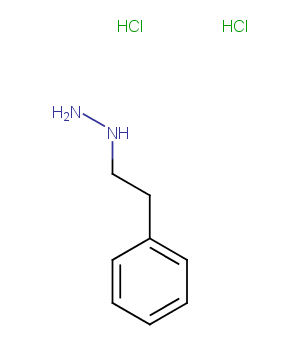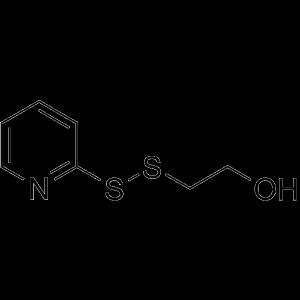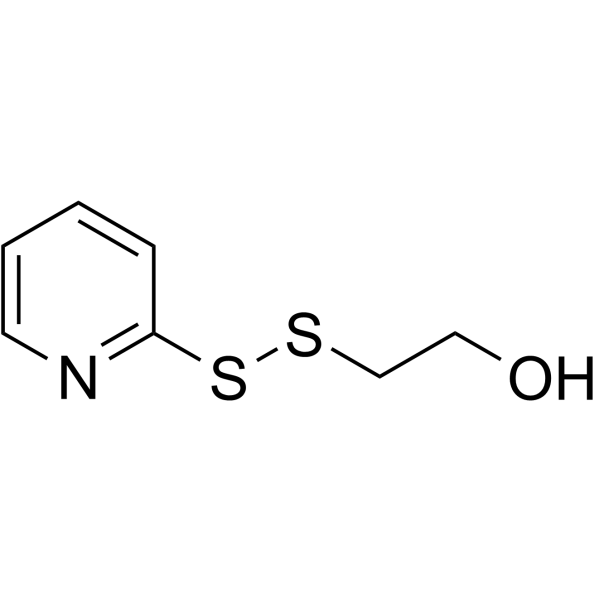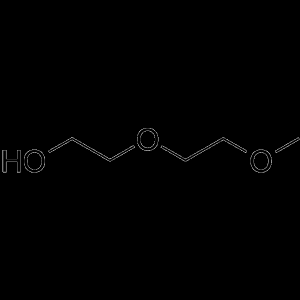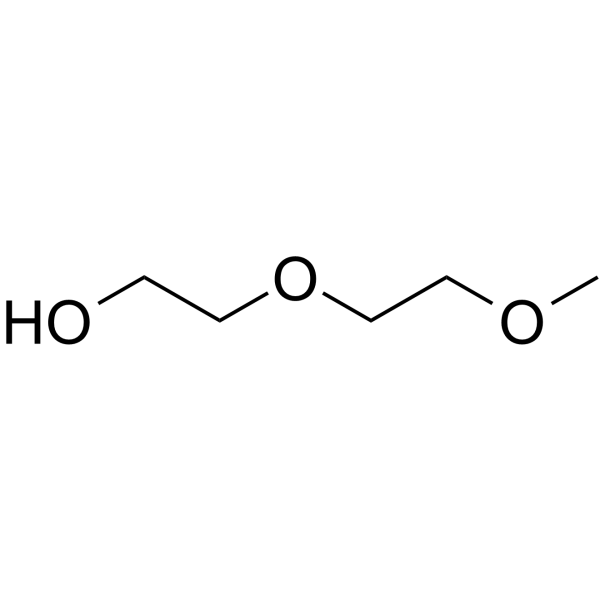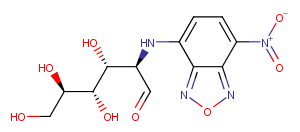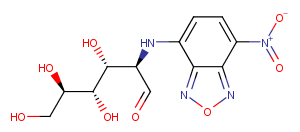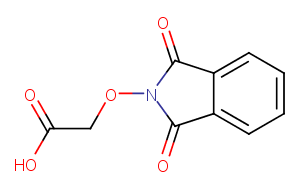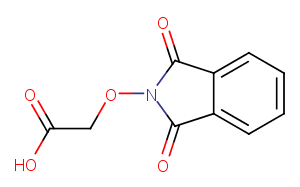TargetMol
(2-{[2-(2-fluorophenoxy)ethyl]sulfanyl}-1H-benzimidazol-1-yl)acetic acid is a prostaglandin-like CRTH2 antagonist with an IC50 < 10 μM, which can be used in studies of rhinitis, COPD, rheumatoid arthritis, eczema and conjunctivitis.
More Information
Supplier Page
TargetMol
(2-{[2-(2-fluorophenoxy)ethyl]sulfanyl}-1H-benzimidazol-1-yl)acetic acid is a prostaglandin-like CRTH2 antagonist with an IC50 < 10 μM, which can be used in studies of rhinitis, COPD, rheumatoid arthritis, eczema and conjunctivitis.
More Information
Supplier Page
TargetMol
(2-Acetoxyethyl)trimethylammonium is a useful organic compound for research related to life sciences and the catalog number is T124730.
More Information
Supplier Page
TargetMol
(2-Acetoxyethyl)trimethylammonium is a useful organic compound for research related to life sciences and the catalog number is T124730.
More Information
Supplier Page
TargetMol
(2-Amino-1-hydroxyethyl)phosphonic acid is a useful organic compound for research related to life sciences and the catalog number is T126325.
More Information
Supplier Page
TargetMol
(2-Amino-1-hydroxyethyl)phosphonic acid is a useful organic compound for research related to life sciences and the catalog number is T126325.
More Information
Supplier Page
TargetMol
The specific growth rates of C. raciborskii cells in media treated with β-glycerol phosphate, d-glucose-6-phosphate, and (2-aminoethyl)phosphinic acid are significantly higher than those of cells grown in phosphorus free media.
More Information
Supplier Page
TargetMol
(2-Aminoethyl)phosphonic acid belongs to the class of organic compounds known as organic phosphonic acids. (2-Aminoethyl)phosphonic acid has been primarily detected in urine. (2-Aminoethyl)phosphonic acid participates in a number of enzymatic reactions. In particular, (2-Aminoethyl)phosphonic acid can be biosynthesized from phosphonic acid. (2-Aminoethyl)phosphonic acid is also a parent compound for other transformation products, including but not […]
More Information
Supplier Page
TargetMol
(2-Aminoethyl)phosphonic acid belongs to the class of organic compounds known as organic phosphonic acids. (2-Aminoethyl)phosphonic acid has been primarily detected in urine. (2-Aminoethyl)phosphonic acid participates in a number of enzymatic reactions. In particular, (2-Aminoethyl)phosphonic acid can be biosynthesized from phosphonic acid. (2-Aminoethyl)phosphonic acid is also a parent compound for other transformation products, including but not […]
More Information
Supplier Page
TargetMol
(2-Aminoethyl)phosphonic acid belongs to the class of organic compounds known as organic phosphonic acids. (2-Aminoethyl)phosphonic acid has been primarily detected in urine. (2-Aminoethyl)phosphonic acid participates in a number of enzymatic reactions. In particular, (2-Aminoethyl)phosphonic acid can be biosynthesized from phosphonic acid. (2-Aminoethyl)phosphonic acid is also a parent compound for other transformation products, including but not […]
More Information
Supplier Page
TargetMol
(2-Aminoethyl)phosphonic acid belongs to the class of organic compounds known as organic phosphonic acids. (2-Aminoethyl)phosphonic acid has been primarily detected in urine. (2-Aminoethyl)phosphonic acid participates in a number of enzymatic reactions. In particular, (2-Aminoethyl)phosphonic acid can be biosynthesized from phosphonic acid. (2-Aminoethyl)phosphonic acid is also a parent compound for other transformation products, including but not […]
More Information
Supplier Page
TargetMol
(2-Aminoethyl)phosphonic acid belongs to the class of organic compounds known as organic phosphonic acids. (2-Aminoethyl)phosphonic acid has been primarily detected in urine. (2-Aminoethyl)phosphonic acid participates in a number of enzymatic reactions. In particular, (2-Aminoethyl)phosphonic acid can be biosynthesized from phosphonic acid. (2-Aminoethyl)phosphonic acid is also a parent compound for other transformation products, including but not […]
More Information
Supplier Page
TargetMol
(2-Aminoethyl)phosphonic acid belongs to the class of organic compounds known as organic phosphonic acids. (2-Aminoethyl)phosphonic acid has been primarily detected in urine. (2-Aminoethyl)phosphonic acid participates in a number of enzymatic reactions. In particular, (2-Aminoethyl)phosphonic acid can be biosynthesized from phosphonic acid. (2-Aminoethyl)phosphonic acid is also a parent compound for other transformation products, including but not […]
More Information
Supplier Page
TargetMol
TargetMol
TargetMol
TargetMol
(2-Hydroxyethoxy)acetic acid (β-hydroxyethoxyacetic acid) is the primary urinary metabolite of 1,4-Dioxane. It serves as a dependable and sensitive short-term biomarker in urine.
More Information
Supplier Page
TargetMol
(2-Hydroxyethoxy)acetic acid (β-hydroxyethoxyacetic acid) is the primary urinary metabolite of 1,4-Dioxane. It serves as a dependable and sensitive short-term biomarker in urine.
More Information
Supplier Page
TargetMol
(2-methyl-2,3-dihydro-1H-inden-2-yl)methanamine hydrochloride is a cyclic amine that is structurally related to amphetamine and has been shown to have significant effects on the central nervous system.
More Information
Supplier Page
TargetMol
(2-methyl-2,3-dihydro-1H-inden-2-yl)methanamine hydrochloride is a cyclic amine that is structurally related to amphetamine and has been shown to have significant effects on the central nervous system.
More Information
Supplier Page
TargetMol
(2-methyl-2,3-dihydro-1H-inden-2-yl)methanamine hydrochloride is a cyclic amine that is structurally related to amphetamine and has been shown to have significant effects on the central nervous system.
More Information
Supplier Page
TargetMol
(2-methyl-2,3-dihydro-1H-inden-2-yl)methanamine hydrochloride is a cyclic amine that is structurally related to amphetamine and has been shown to have significant effects on the central nervous system.
More Information
Supplier Page
TargetMol
(2-methyl-2,3-dihydro-1H-inden-2-yl)methanamine hydrochloride is a cyclic amine that is structurally related to amphetamine and has been shown to have significant effects on the central nervous system.
More Information
Supplier Page
TargetMol
(2-methyl-2,3-dihydro-1H-inden-2-yl)methanamine hydrochloride is a cyclic amine that is structurally related to amphetamine and has been shown to have significant effects on the central nervous system.
More Information
Supplier Page
TargetMol
(2-methyl-2,3-dihydro-1H-inden-2-yl)methanamine hydrochloride is a cyclic amine that is structurally related to amphetamine and has been shown to have significant effects on the central nervous system.
More Information
Supplier Page
TargetMol
(2-methyl-2,3-dihydro-1H-inden-2-yl)methanamine hydrochloride is a cyclic amine that is structurally related to amphetamine and has been shown to have significant effects on the central nervous system.
More Information
Supplier Page
TargetMol
(2-methyl-2,3-dihydro-1H-inden-2-yl)methanamine hydrochloride is a cyclic amine that is structurally related to amphetamine and has been shown to have significant effects on the central nervous system.
More Information
Supplier Page
TargetMol
TargetMol
TargetMol
(2-methylpropyl)({[3-(trifluoromethyl)phenyl]methyl})amine is a selective serotonin receptor agonist that specifically targets 5-HT2A and 5-HT2C receptors. It has been used to study the role of serotonin in a variety of physiologic and pathologic conditions.
More Information
Supplier Page
TargetMol
(2-methylpropyl)({[3-(trifluoromethyl)phenyl]methyl})amine is a selective serotonin receptor agonist that specifically targets 5-HT2A and 5-HT2C receptors. It has been used to study the role of serotonin in a variety of physiologic and pathologic conditions.
More Information
Supplier Page
TargetMol
(2-methylpropyl)({[3-(trifluoromethyl)phenyl]methyl})amine is a selective serotonin receptor agonist that specifically targets 5-HT2A and 5-HT2C receptors. It has been used to study the role of serotonin in a variety of physiologic and pathologic conditions.
More Information
Supplier Page
TargetMol
(2-methylpropyl)({[3-(trifluoromethyl)phenyl]methyl})amine is a selective serotonin receptor agonist that specifically targets 5-HT2A and 5-HT2C receptors. It has been used to study the role of serotonin in a variety of physiologic and pathologic conditions.
More Information
Supplier Page
TargetMol
(2-methylpropyl)({[3-(trifluoromethyl)phenyl]methyl})amine is a selective serotonin receptor agonist that specifically targets 5-HT2A and 5-HT2C receptors. It has been used to study the role of serotonin in a variety of physiologic and pathologic conditions.
More Information
Supplier Page
TargetMol
(2-methylpropyl)({[3-(trifluoromethyl)phenyl]methyl})amine is a selective serotonin receptor agonist that specifically targets 5-HT2A and 5-HT2C receptors. It has been used to study the role of serotonin in a variety of physiologic and pathologic conditions.
More Information
Supplier Page
TargetMol
(2-methylpropyl)({[3-(trifluoromethyl)phenyl]methyl})amine is a selective serotonin receptor agonist that specifically targets 5-HT2A and 5-HT2C receptors. It has been used to study the role of serotonin in a variety of physiologic and pathologic conditions.
More Information
Supplier Page
TargetMol
(2-methylpropyl)({[3-(trifluoromethyl)phenyl]methyl})amine is a selective serotonin receptor agonist that specifically targets 5-HT2A and 5-HT2C receptors. It has been used to study the role of serotonin in a variety of physiologic and pathologic conditions.
More Information
Supplier Page
TargetMol
(2-phenylethyl)hydrazine dihydrochloride is a compound. It is used in the synthesis of various drugs, in the production of certain types of plastics and in the manufacture of certain types of dyes.
More Information
Supplier Page
TargetMol
(2-phenylethyl)hydrazine dihydrochloride is a compound. It is used in the synthesis of various drugs, in the production of certain types of plastics and in the manufacture of certain types of dyes.
More Information
Supplier Page
TargetMol
(2-phenylethyl)hydrazine dihydrochloride is a compound. It is used in the synthesis of various drugs, in the production of certain types of plastics and in the manufacture of certain types of dyes.
More Information
Supplier Page
TargetMol
(2-phenylethyl)hydrazine dihydrochloride is a compound. It is used in the synthesis of various drugs, in the production of certain types of plastics and in the manufacture of certain types of dyes.
More Information
Supplier Page
TargetMol
(2-phenylethyl)hydrazine dihydrochloride is a compound. It is used in the synthesis of various drugs, in the production of certain types of plastics and in the manufacture of certain types of dyes.
More Information
Supplier Page
TargetMol
(2-phenylethyl)hydrazine dihydrochloride is a compound. It is used in the synthesis of various drugs, in the production of certain types of plastics and in the manufacture of certain types of dyes.
More Information
Supplier Page
TargetMol
(2-phenylethyl)hydrazine dihydrochloride is a compound. It is used in the synthesis of various drugs, in the production of certain types of plastics and in the manufacture of certain types of dyes.
More Information
Supplier Page
TargetMol
(2-Pyridyldithio)-PEG1-hydrazine is a one-unit cleavable polyethylene glycol (PEG) linker specifically designed for the synthesis of antibody-drug conjugates (ADCs). This linker offers the advantage of controlled release of the drug payload from the ADC construct. It is utilized in the conjugation process between the antibody and the cytotoxic drug, enabling the targeted delivery of the drug […]
More Information
Supplier Page
TargetMol
(2-Pyridyldithio)-PEG1-hydrazine is a one-unit cleavable polyethylene glycol (PEG) linker specifically designed for the synthesis of antibody-drug conjugates (ADCs). This linker offers the advantage of controlled release of the drug payload from the ADC construct. It is utilized in the conjugation process between the antibody and the cytotoxic drug, enabling the targeted delivery of the drug […]
More Information
Supplier Page
TargetMol
TargetMol
TargetMol
(2-Pyridyldithio)-PEG4 acid is a four-unit cleavable polyethylene glycol (PEG) linker specifically designed for the synthesis of antibody-drug conjugates (ADCs)[1]. It serves as a crucial component in the conjugation of antibodies and drugs, enabling targeted drug delivery and enhanced therapeutic efficacy. This linker possesses a (2-pyridyldithio) group at one end, facilitating the attachment of the linker […]
More Information
Supplier Page
TargetMol
(2-Pyridyldithio)-PEG4 acid is a four-unit cleavable polyethylene glycol (PEG) linker specifically designed for the synthesis of antibody-drug conjugates (ADCs)[1]. It serves as a crucial component in the conjugation of antibodies and drugs, enabling targeted drug delivery and enhanced therapeutic efficacy. This linker possesses a (2-pyridyldithio) group at one end, facilitating the attachment of the linker […]
More Information
Supplier Page



